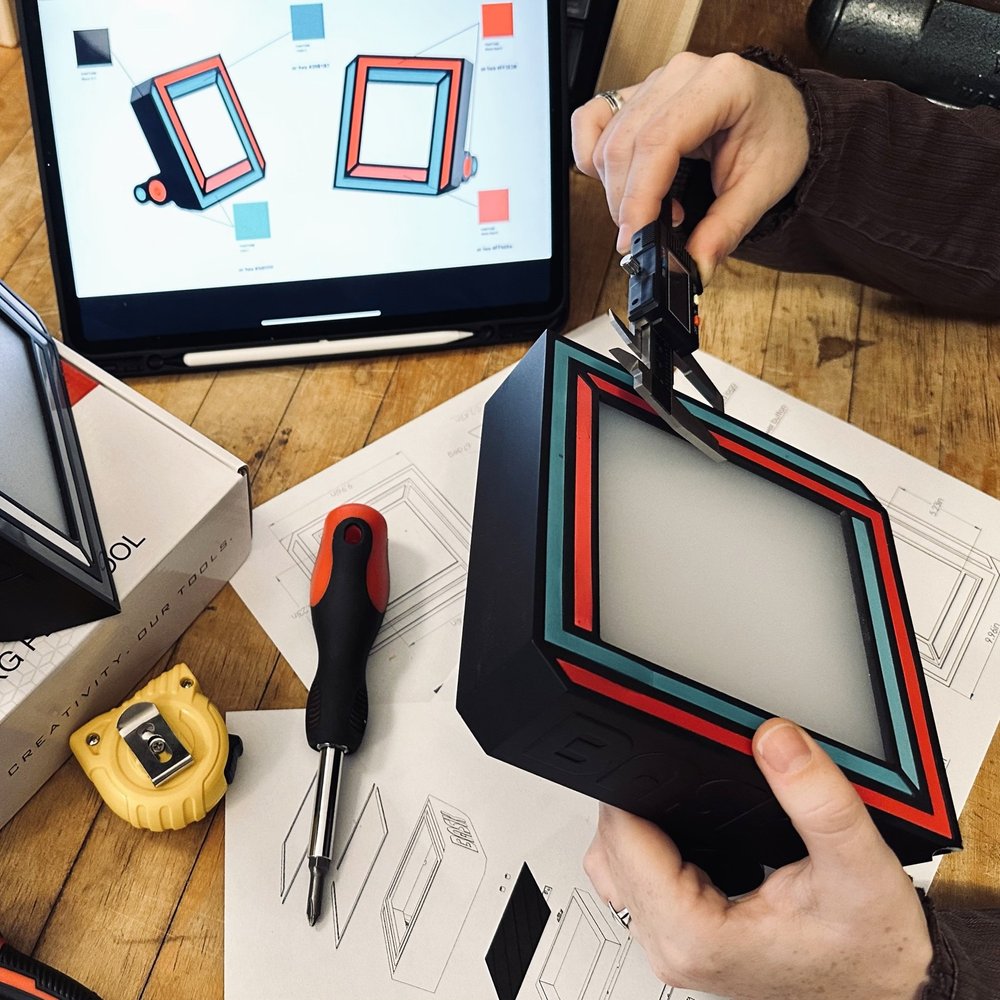Here are some things we learned:
The concept of Bee Space, which is 5/16”. If there is a gap larger than that, bees will fill it with honeycomb. If there’s a smaller gap. They will fill it with propolis.
In winter, bees wad themselves up into an ever shifting fuzzy ball, with everyone slowly wiggling into the middle to warm up and then back to the outside to insulate the others.
You can keep two queens in one hive, but they must be kept strictly separate otherwise they will murder each other.
Beehives traditionally use finger jointed construction, which is done with a machine called a ‘hauncher’.
We got Keeper’s Hive set up with one of our vendors to get all their hardware and custom parts made and kitted, and helped make some design updates that made the hives easier to produce in volume. It’s always a little tricky to take an artisan product from hand to mass production, and we settled on a hybrid model– the wood parts are created in an Amish workshop in Pennsylvania, while the plastic, glass and metal parts are produced in a facility overseas.
We were delighted to see that they absolutely smashed their fundraising goals for their first big production run.
Now what are the regulations about raising bees in Gowanus?





